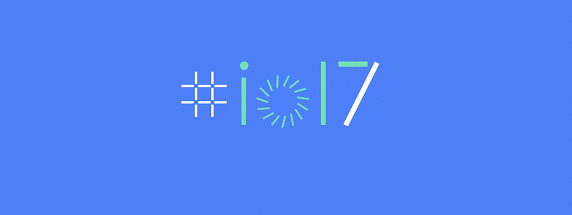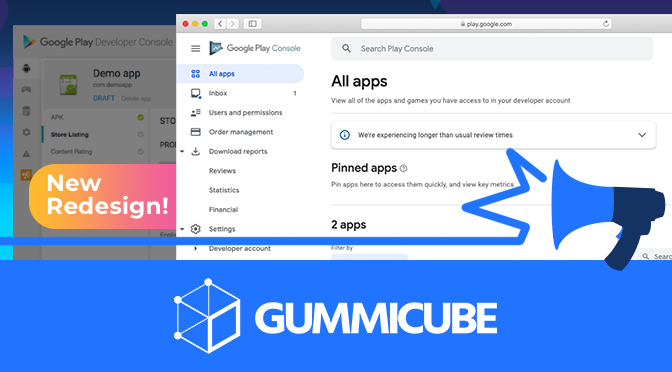
App Store Holiday Schedule 2020
Posted on November 23rd, 2020
When is the App Store Holiday Schedule 2020? Learn about the dates of this year's shutdown and how to prepare.

Google’s I/O conference kicked off with major announcements that will help users and developers. CEO Sundar Pichai made a stunning announcement that there are now 2 billion monthly active Android users, and there were 82 billion app installs in 2016. Google showed off its technology by starting its keynote on Wednesday addressing its advances in artificial intelligence that will be coming to Google Assistant soon. The tech company is also making big changes to Firebase, Google Photos, Android Instant Apps and Gmail along with unveiling Google Lens, Android O and Android Studio 3.0. Here is a list of Google’s announcements and how they will help users and developers alike: 1. Google Assistant Updates – Now for iOS Google discussed its Software Development Kit for Google Assistant and how it will now let third-party device makers inject the conversational technology into home appliances. Order-taking, payments and receipts will also be integrated into TV allowing you to make orders and payments while watching your favorite shows. Users will now be able to type requests and questions rather than speaking. During the keynote address, Pichai stated that Google Assistant is coming to iOS devices. This makes Google Assistant available to hundreds of millions more users that do not have an Android device. Unlike Siri for iOS devices, Google Assistant cannot be used with the home button but must be opened by tapping the app icon. Part of Google Assistant is the newly launched Lens, a service that uses AI technology to quickly recognize objects, locations, businesses and other things in the world all through your camera lens.
The concept of Instant Apps was first announced at 2016’s I/O conference, but on May 17th, Google announced that the Instant Apps SDK was available to all developers. Currently, there are about 50 apps that have created Instant Apps, and some have seen increases in purchases and views. Instant Apps give users an opportunity to use an app without having to install. They can tap the URL of an app to launch it without having to go through the Play Store. Once the user closes the app, it is gone without the app ever being installed to the device’s home screen.
Since Google first acquired Firebase back in 2014, the company has grown the service to provide more help to developers build apps for Android, iOS and web. Besides releasing more features to help with app development, the company also started open-sourcing Firebase’s SDK kits. Firebase is also getting analytics updates making analytic reports available across the Firebase Console and Google Analytics interface. For those that monetize their app, they will see that Firebase now shares data with AdMob.
Google launched Android O Beta where developers can start testing their apps against this release by downloading the new preview that includes an updated SDK with system images for several devices, the Android Emulator and an emulator for Android Wear 2.0. Vice President of Engineering for Android, Dave Burke, highlighted two themes that Android O will focus on: Fluid Experiences and Vitals. Fluid Experiences includes features like Picture-in-Picture, Notification Dots, Autofill and Smart Text. Vitals, a newer concept, includes features for security enhancements, OS optimizations and developer tools.
Google I/O highlighted three major improvements to developers such as the Google Payment API, a redesigned AdMob and App Attribution Partners.
I. Google Payment: The expansion of payment solutions now allows merchants and developers to give their users the option to pay with credit and debit cards already saved to the user’s Google Account. Users will have access to multiple Google Payment options like previously saved credit and debit cards via Android Pay, payment cards used on the Play Store or a form of payment stored via Chrome.
II. AdMob: Currently, AdMob has already paid over $3.5 billion in ad revenue to developers across iOS and Android. It has been redesigned to allow developers to easily pick an app, view its key metrics and make improvements to its performance. Google is also introducing new ad placements on the home and app list pages in the Play Store to reach users in “discovery mode.”
III. App Attribution Partners: A new program to integrate data from seven global companies like Adjust, Adways, Appsflyers and more directly into AdWords. The integration of AdWords with these partners will provide developers with data to review their app metrics and improve their app’s performance.
6. Play Console Update Google launched another set of tools for developers that use the Play Console. The new tool called Vitals will automatically analyze app reports to show developer pertinent info about any app issues such as crashes or freezes and monitor battery usage. Adding a tool such as Vitals can help developers better pinpoint the source of problems and understand why users might be uninstalling their app to create solutions that retain more users. The announcement is reminiscent of Apple’s announcement a couple weeks ago about their updated App Analytics tools. Both tech companies are shifting their focus to providing developers more information to correct issues within their apps to avoid negative user reviews and engage with users.
Google’s I/O developer conference unveiled the direction the tech company is headed in the future and provided developers more tools to make developing apps simpler and faster. The updates to Firebase and the Play Console are sure to continue increasing the number of apps on the Play Store and encourage more users to install more apps. The future is bright for Google and they are sure to only continue producing more updates to help developers and improve users’ experiences.

When is the App Store Holiday Schedule 2020? Learn about the dates of this year's shutdown and how to prepare.

Apple's App Store Guidelines have strict privacy requirements. Developers now must provide information to users on the App Store listing regarding the data they access.

The Google Play Developer Console has been updated with a new design and adjusted tools. What's different, and how will it impact App Store Optimization?